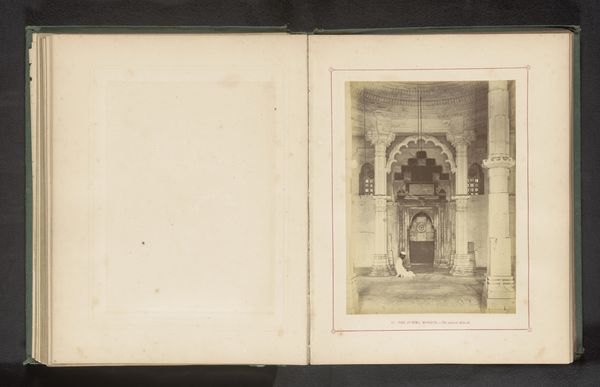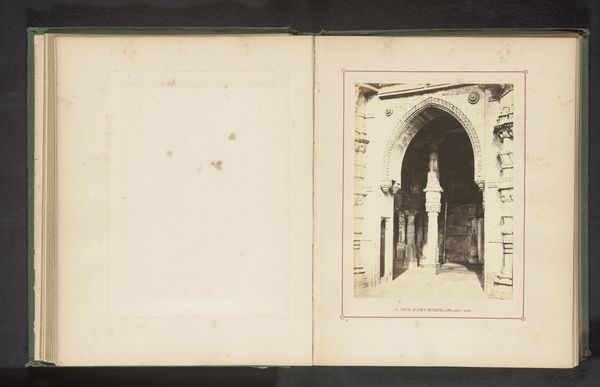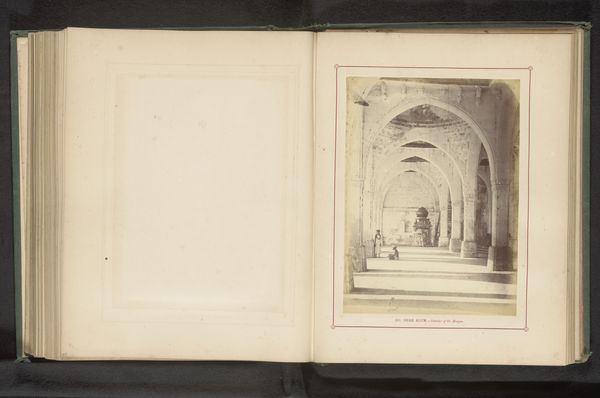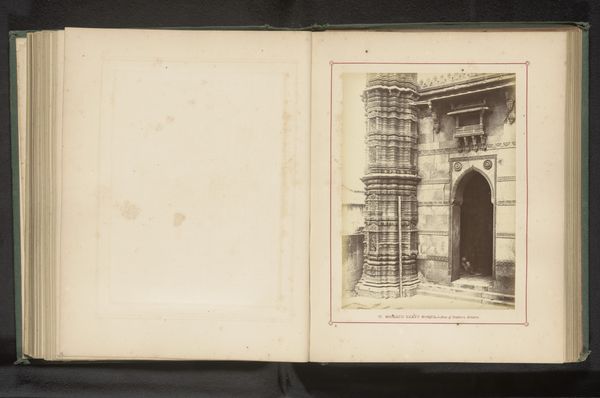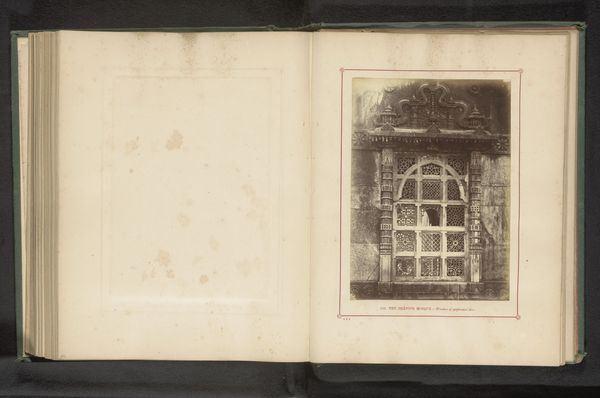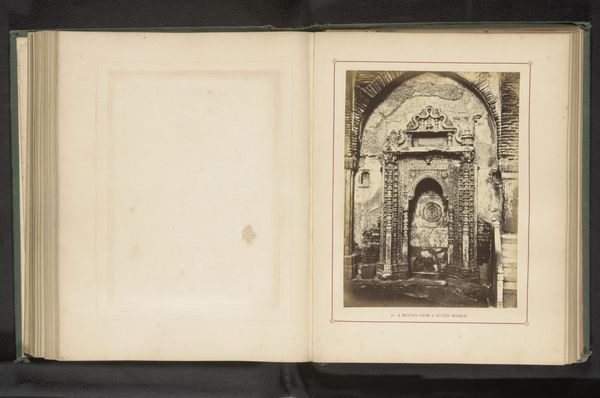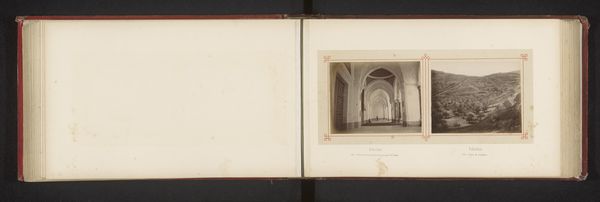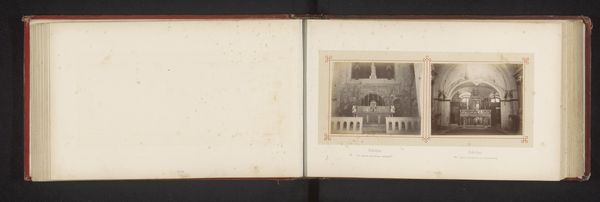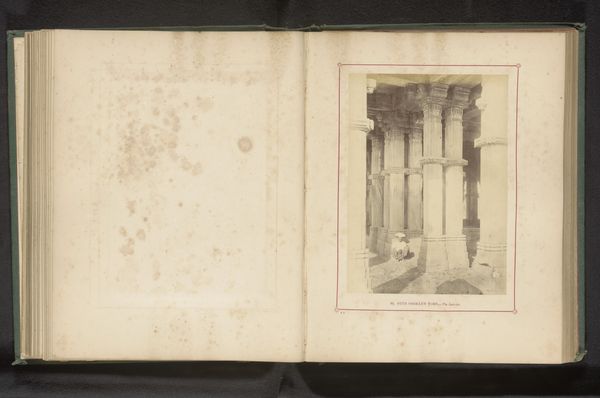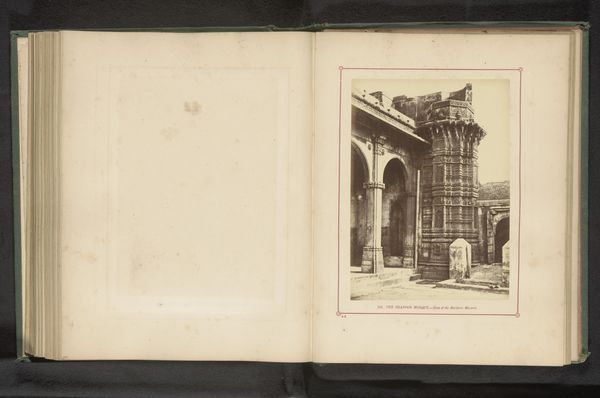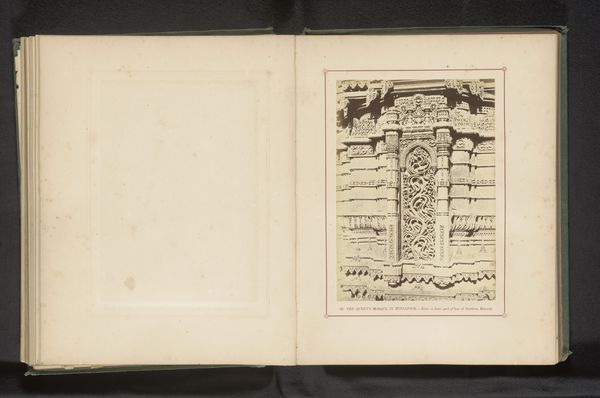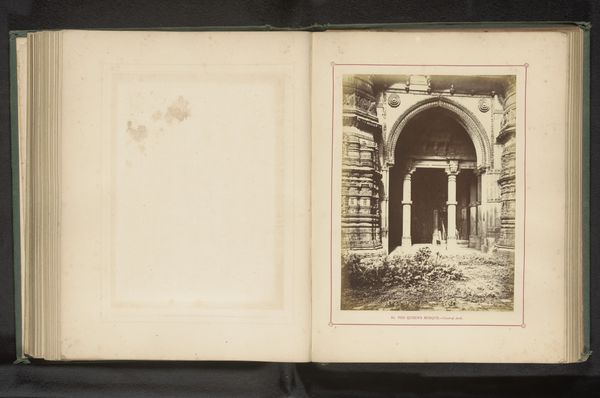
print, photography, albumen-print, architecture
# print
#
asian-art
#
landscape
#
photography
#
islamic-art
#
albumen-print
#
architecture
Dimensions: height 200 mm, width 146 mm
Copyright: Rijks Museum: Open Domain
Editor: Here we have "Centrale boog van de Jama Masjid in Ahmedabad," taken before 1866 by Thomas Biggs, using the albumen print technique. It has this sepia tone that makes it seem so distant. How would you approach discussing a piece like this? Curator: As a materialist, I’m drawn to considering the labor embedded in its production. Think about the albumen printing process: eggs, photographic paper, the labor involved in creating both the architectural structure and this particular representation. What does the consumption of this image, particularly its circulation within an album format, tell us about the cultural values placed on representing and owning images of distant lands? Editor: That's interesting, because my first instinct was purely aesthetic – to admire the geometric perfection of the arches. Curator: The perfection is itself a product of both human craftsmanship and technological development, isn't it? The very act of documenting architecture through photography raises questions. How does it reinforce colonial power structures, considering who would have the access and resources to commission or purchase such a print? Editor: So, by focusing on the materiality of the print, we can unravel broader socio-political themes? Curator: Precisely. The albumen print wasn't merely a neutral medium; it participated in constructing a particular gaze. Think about how the choice of representing this architectural subject reflects imperial interests. This wasn't just about capturing beauty; it was also about documentation, control, and ultimately, consumption of the ‘Orient’ through reproducible media. Editor: It is really fascinating to think about this photograph as more than just an image, and really question how its very creation participates in complex power dynamics. Curator: Indeed. Reflecting on the means of production and consumption allows us a more critical understanding of its historical and cultural significance.
Comments
No comments
Be the first to comment and join the conversation on the ultimate creative platform.
